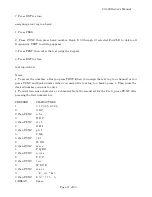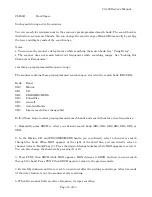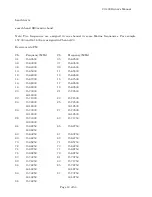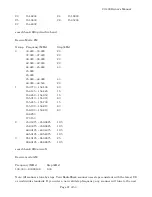
20-428 Owner’s Manual
Page 7 of 50
Signal Stalker II – searches nearby strong signals quickly. See “Signal Stalker II”.
Preprogrammed Search Banks – allow you to listen to frequencies and decide which frequencies you
want to store when you are ready to program the scanner. See “Searching a Preprogrammed
Frequency Range”.
Manual Tuning – allows you to manually move through the entire range of available frequencies.
(See “Specifications” for a list of the available frequency Ranges.)
Weather Radio – allows you to listen to NOAA weather broadcasts without programming. See
“Listening to the Weather Band”.
understanding your scanner’s modes
You can program each channel with any of seven receive modes (AM, FM, CT, DC, MO, ED, and LT).
Each receive mode affects how your scanner operates when scanning and receiving transmissions.
Notes:
•
Trunked modes (MO, ED, and LT) can only be selected for frequencies above 137 MHz.
•
Your scanner’s closed mode lets you hear only those Trunking talkgroups you specify. For more
information, see “Open and Closed Modes”.
AM mode
The AM mode sets the scanner to receive transmissions using amplitude modulation (AM),
primarily used for aircraft, military, some amateur radio, and some government transmissions.
(Refer to “Specifications” for a list of the frequencies covered.) When the scanner receives a
transmission on a channel set to the AM mode, it always stops on the transmission.
FM mode
The FM mode sets the scanner to receive transmissions using frequency modulation (FM), used for
most public safety transmissions, as well as broadcast, business, and amateur radio transmissions.
When the scanner receives a transmission on a channel set to the FM mode, it always stops on the
transmission.
CTCSS (CT) mode
CTCSS mode sets the scanner to receive transmissions using frequency modulation (FM) with
Continuous Tone Coded Squelch System (CTCSS) subaudible tone codes. CTCSS allows multiple
users to share a single radio frequency without hearing each other’s transmissions. In your
PRO-2055 scanner, the CTCSS feature can be used to block the reception of transmissions on shared
channel to only those that use the CTCSS mode also features a Code Search setting that allows you
to instantly display and store unknown codes into the channel memory. CTCSS tones can sometimes








































